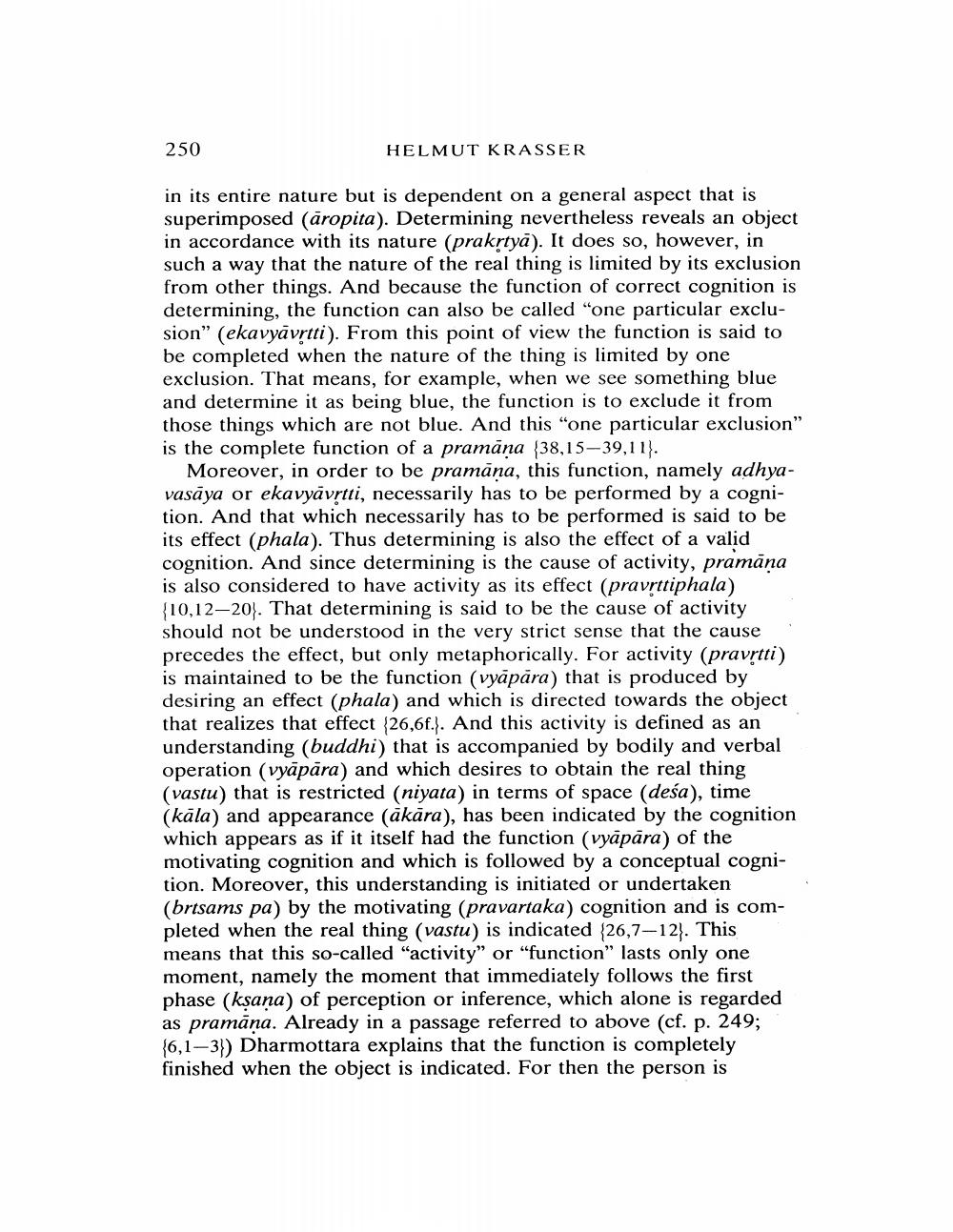Book Title: Dharmottaras Theory Of Knowledge In His Laghupramanyapariksa Author(s): Helmut Krasser Publisher: Helmut Krasser View full book textPage 4
________________ 250 HELMUT KRASSER in its entire nature but is dependent on a general aspect that is superimposed (aropita). Determining nevertheless reveals an object in accordance with its nature (prakrtyā). It does so, however, in such a way that the nature of the real thing is limited by its exclusion from other things. And because the function of correct cognition is determining, the function can also be called "one particular exclusion" (ekavyāvrtti). From this point of view the function is said to be completed when the nature of the thing is limited by one exclusion. That means, for example, when we see something blue and determine it as being blue, the function is to exclude it from those things which are not blue. And this "one particular exclusion” is the complete function of a pramāna (38,15-39,11). Moreover, in order to be pramana, this function, namely adhyavasāya or ekavyāvrtti, necessarily has to be performed by a cognition. And that which necessarily has to be performed is said to be its effect (phala). Thus determining is also the effect of a valid cognition. And since determining is the cause of activity, pramāna is also considered to have activity as its effect (pravrttiphala) 10,12–20). That determining is said to be the cause of activity should not be understood in the very strict sense that the cause precedes the effect, but only metaphorically. For activity (pravrtti) is maintained to be the function (vyāpāra) that is produced by desiring an effect (phala) and which is directed towards the object that realizes that effect (26,6f.). And this activity is defined as an understanding (buddhi) that is accompanied by bodily and verbal operation (vyāpāra) and which desires to obtain the real thing (vastu) that is restricted (niyata) in terms of space (deśa), time (kāla) and appearance (ākāra), has been indicated by the cognition which appears as if it itself had the function (vyāpāra) of the motivating cognition and which is followed by a conceptual cognition. Moreover, this understanding is initiated or undertaken (brtsams pa) by the motivating (pravartaka) cognition and is completed when the real thing (vastu) is indicated (26,7–12). This means that this so-called "activity" or "function" lasts only one moment, namely the moment that immediately follows the first phase (ksana) of perception or inference, which alone is regarded as pramāņa. Already in a passage referred to above (cf. p. 249; {6,1-3)) Dharmottara explains that the function is completely finished when the object is indicated. For then the person isPage Navigation
1 2 3 4 5 6 7 8 9 10 11 12 13 14 15 16 17 18 19 20 21 22 23 24 25
